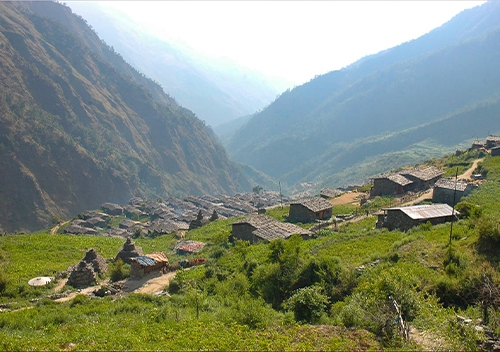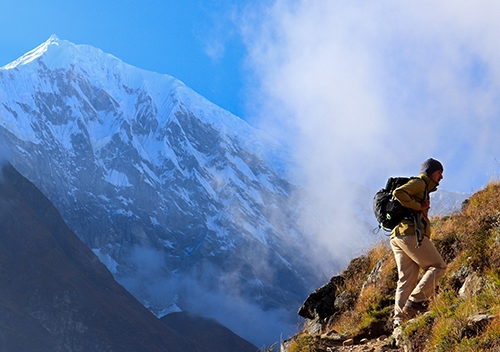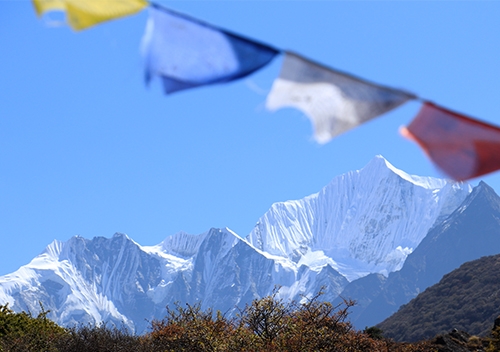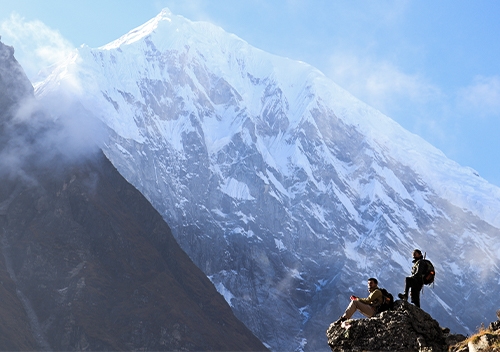Adjacent to the Tibet-China border, the Langtang Region trek is one of the shortest and most awesome trekking trips not merely for exploring the stunning Himalayas but also for the distinct culture, rituals, and lifestyle of diverse ethnic groups residing along the trail which have an affinity to Tibet. Langtang has located approximately 130 km to the north of Kathmandu valley. Langtang trek is a combination of both unparalleled natural beauty and cultural richness.
The Langtang region trek mostly revolves around the Langtang valley, a narrow mountain valley nestled with the Himalayas and snowy peaks offering you awesome views of the wonderful mountain vista. The Himalayan scenery you will have from here is of the mighty peak Langtang Lirung (7,246 m), which is the highest peak in the area, located just to the north of Langtang valley. From the valley, you will also see non-stop sceneries of other smaller peaks filled with snow namely Ganjala Pass (5,122 m), Gang Chhenpo (6,388 m), Naya Kangri (5,846 m), Dorge Lakpa (6,989 m), Chinese Danda (ridge), Jugal Himal and so forth. These lofty Himalayas surround the Langtang Valley. These greater sceneries impart amazing pleasure and are full of fondness.
Langtang trek is one the most popular trekking destinations after the Everest and Annapurna regions. Since it is a short and not very high altitude, the majority of travellers, mainly the first-timers coming to Footprint Adventure, choose to trek in the region. Langtang National Park solely protects the Langtang region trek. It is Nepal's first national park, which was officially established in 1976. This park is the home of Nepal's largest parks, protecting a large number of flora and fauna, including red pandas, Himalayan black bears, snow leopards, wild dogs, and Ghoral. Furthermore, there are said to be more than 250 species of endangered birds and various endangered flora and fauna.
In addition, The Gosainkunda, the sacred lake of the area, is another major attraction. During the Langtang trek, you will have an opportunity to explore Gosainkunda Lake, which is a sacred alpine lake located at 4,380 m in height. Similarly, there are several other sacred lakes, approximately about 70 lakes, namely Parvatikunda, Bhairavkunda, and Dudhakunda, to name a few. If you wish, you can also extend your trekking trip to visit these lakes, especially the Gosainkunda, which is said to have been created by Lord Shiva by his Trident to quench his thrust while wandering in the Himalayas. Thousands of devotees visit the areas during the Janai Purnima, the full moon day, a great festival in August.
Similarly, you also can sojourn in the beautiful houses of various ethnic groups namely Sherpa, Hyolmo, Bhotiya (Tibetan origin people), and Tamang, whose religious practices, languages, and dress are much more similar to those of Tibet. Moreover, their skills, primarily handicrafts, are really worth exploring. During the Langtang trek, you will equally have an opportunity to explore an ancient Buddhist monastery namely the Kyanjin Gompa and explore the upper valley, especially the Langshisa and beyond, equally pass through terraced farmland, forest filled with pine, bamboo, and rhododendron flower, also traverse through yak pastures and awesome hillside which offers you dazzling views of incredible landscapes and of the Himalayas stretching up to the Tibetan border. Langtang trek is also popular for the Tamang heritage trail where you will have an opportunity to explore the distinct culture, lifestyles, and rituals of Tamang indigenous communities, whose culture, lifestyles, and crafts remained untouched and protected as that of old-aged tradition especially visiting Gatlang, Chilime, Thuman, Timure, and Briddim villages. These all features are explicit enough why Langtang region trekking is awesome and wonderful.





